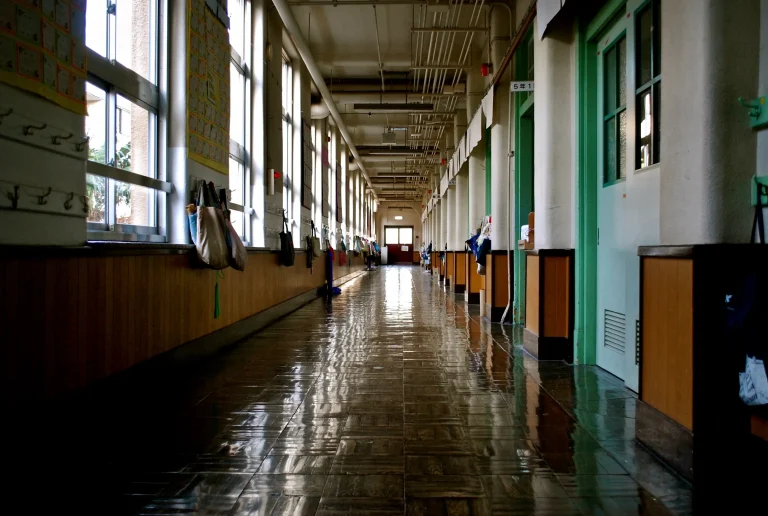Why Are Florida Drivers So Bad?
Florida drivers have a notorious reputation across the United States for being some of the worst in the country. From snowbirds to tourists to locals, the streets of Florida are filled with cars driven by seemingly reckless or clueless people.
If you’re short on time, here’s a quick answer: Several factors contribute to Florida’s notoriously bad drivers, including a large elderly population, tourists and transplants unfamiliar with the roads, dense urbanization, and lack of formal driver’s education requirements. We’ll explore the major causes behind the phenomenon of notoriously bad Florida drivers in more detail.
From an aging population to dangerous road conditions, we’ll look at the key reasons Florida drivers are considered among the worst. We’ll also overview telling statistics and casualties, as well as steps Florida can take to improve road safety.
Large Elderly and Snowbird Population
One of the reasons why Florida drivers are often labeled as bad is due to the large elderly population in the state. Florida has long been a popular retirement destination, attracting seniors from all over the country.
While age alone does not determine driving ability, it is well-known that as people get older, their reflexes and vision may decline, which can affect their driving skills. According to a study conducted by the Insurance Institute for Highway Safety, drivers aged 65 and older have higher crash rates per mile driven compared to middle-aged drivers.
Additionally, Florida is also known for its significant snowbird population. Snowbirds are individuals, often retirees, who migrate to Florida during the winter months to escape the cold weather up north.
This influx of temporary residents can lead to increased traffic congestion and unfamiliarity with the local driving laws and roadways. Snowbirds may not be as familiar with the layout of the roads and the driving practices specific to Florida, which can contribute to accidents or frustrating driving situations.
It is important to note that not all elderly or snowbird drivers are bad drivers. Many older individuals and snowbirds take precautions and drive safely. However, the large concentration of these populations in Florida does contribute to the perception of bad driving in the state.
For more information on safe driving practices for seniors, you can visit the National Highway Traffic Safety Administration’s website. This website provides valuable resources and tips for older drivers to maintain their driving skills and stay safe on the road.
Many Tourists Unfamiliar With Roads
One of the main reasons why Florida drivers may have a reputation for being bad is because of the high number of tourists who are unfamiliar with the roads. Florida is a popular vacation destination, attracting millions of visitors each year.
Many of these tourists are driving rental cars and may not be familiar with the local traffic laws or road conditions. This can lead to confusion and mistakes on the road.
Florida’s extensive highway system and complex road networks can be challenging for drivers who are not accustomed to them. Navigating through busy highways and unfamiliar intersections can be daunting, especially for those who are not used to driving in large cities.
This lack of familiarity can result in erratic driving behavior and a higher likelihood of accidents.
The Impact of Tourists on Traffic
The influx of tourists in Florida can also contribute to increased traffic congestion. During peak vacation seasons, roads can become overcrowded, leading to slower traffic and more opportunities for accidents.
The combination of inexperienced drivers and heavy traffic can create a recipe for frustration and dangerous driving situations.
Furthermore, tourists may also be distracted by the beautiful scenery and attractions that Florida has to offer. From the stunning beaches to the theme parks, there is no shortage of distractions for drivers.
Taking their eyes off the road to admire the surroundings can lead to a lack of focus and increased chances of accidents.
Efforts to Improve Road Safety
Recognizing the challenges posed by tourists, Florida has implemented various initiatives to improve road safety. The state has enhanced signage and road markings to make it easier for drivers to navigate.
Additionally, educational campaigns have been launched to raise awareness among tourists about the local driving laws and regulations.
Law enforcement agencies have also increased their presence on the roads, particularly in areas heavily frequented by tourists. This serves as a deterrent to reckless driving and helps ensure that drivers adhere to traffic rules and regulations.
It is important to note that not all Florida drivers are bad. The actions of a few should not overshadow the responsible and cautious driving behavior of many others on the road. However, the combination of unfamiliar tourists and busy roads can create challenging driving conditions that contribute to the perception of bad driving in the state.
For more information about road safety in Florida, you can visit the official website of the Florida Department of Highway Safety and Motor Vehicles.
Transplants Unacclimated to Florida’s Roads
One of the reasons why Florida drivers have a reputation for being bad is the influx of transplants who are unfamiliar with the state’s unique driving conditions. Many people move to Florida from other states or even countries, bringing with them their driving habits and expectations from their previous locations.
This can lead to confusion and frustration on the roads, as drivers from different regions have different driving styles and rules.
Lack of Experience with Florida Weather
Florida is known for its unpredictable weather, with sudden rainstorms and hurricanes being a regular occurrence. This can make driving conditions challenging, especially for those who are not accustomed to these weather patterns.
Transplants may not be familiar with how to navigate through heavy rain or strong winds, leading to accidents and traffic congestion.
Differences in Traffic Laws and Road Design
Each state has its own set of traffic laws and road design, and Florida is no exception. Transplants may not be aware of the specific rules and regulations in Florida, leading to confusion and potentially dangerous situations on the road.
Additionally, Florida’s roads are known for their unique design, such as the prevalence of roundabouts and toll roads, which can be unfamiliar to drivers from other areas.
Increased Traffic Volume
Florida’s population has been steadily increasing over the years, resulting in a higher volume of traffic on the roads. This can lead to congestion and frustration, which in turn can contribute to aggressive driving behaviors and accidents.
Transplants may not be prepared for the level of traffic they encounter in Florida, leading to poor driving decisions and a higher likelihood of accidents.
It’s important to note that not all Florida drivers are bad. There are many responsible and skilled drivers in the state who follow the rules of the road and prioritize safety. However, the combination of transplants unacclimated to Florida’s roads, unfamiliarity with the weather and traffic conditions, and the increased volume of traffic can contribute to the perception that Florida drivers are bad.
For more information on Florida driving laws and regulations, you can visit the official website of the Florida Department of Highway Safety and Motor Vehicles: https://www.flhsmv.gov/
Lack of Formal Driver’s Education
One of the reasons why Florida drivers are often perceived as bad is the lack of formal driver’s education in the state. Unlike some other states that require a certain number of hours of classroom instruction and behind-the-wheel training, Florida only requires new drivers to pass a written test and a driving skills test.
This means that many drivers on the road have not received comprehensive training on the rules of the road, defensive driving techniques, and other important aspects of safe driving.
The Impact of Lack of Formal Driver’s Education
Without formal driver’s education, new drivers in Florida may not be adequately prepared to handle various driving situations. They may lack the knowledge and skills necessary to make safe decisions on the road.
This can lead to a higher likelihood of accidents, traffic violations, and other negative driving behaviors.
Additionally, the lack of formal driver’s education can contribute to a lack of awareness about important traffic laws and regulations. Drivers may not be familiar with certain rules or may have misconceptions about them, leading to confusion and potentially dangerous situations on the road.
Addressing the Issue
Recognizing the importance of formal driver’s education, some organizations and schools in Florida have taken steps to provide comprehensive training programs. These programs aim to educate new drivers about the rules of the road, defensive driving techniques, and other essential skills.
Encouraging more widespread adoption of these programs and making them more accessible to all new drivers could help improve the overall quality of driving in the state.
Furthermore, advocating for stricter requirements for obtaining a driver’s license, including mandatory driver’s education, could also contribute to safer roads in Florida. By ensuring that all drivers receive comprehensive training before getting behind the wheel, the state can help reduce the number of accidents and promote a culture of responsible driving.
For more information about driver’s education programs in Florida, you can visit the Florida Department of Highway Safety and Motor Vehicles website.
Dense Urbanization and Congestion
One of the reasons why Florida drivers have a reputation for being bad is due to the dense urbanization and congestion in many parts of the state. Cities like Miami, Orlando, and Tampa are known for their heavy traffic and crowded streets.
With a growing population and an influx of tourists, it’s no wonder that navigating these areas can be a challenge.
The high population density in these urban areas leads to increased competition for limited road space, resulting in aggressive and impatient driving behaviors. Drivers may feel the need to constantly switch lanes, cut off other vehicles, or engage in risky maneuvers to get ahead.
This can create a hostile driving environment and increase the likelihood of accidents.
According to the Florida Department of Highway Safety and Motor Vehicles, in 2020 there were over 400,000 crashes reported in the state, with more than 3,000 fatalities. The combination of dense urbanization and congestion contributes to these alarming statistics.Furthermore, the Florida Department of Transportation has identified several areas in the state with high congestion levels. These include major highways such as I-4, I-95, and the Florida Turnpike. These roads are notorious for their heavy traffic and frequent bottlenecks, which can lead to frustration and aggressive driving behaviors.
The Impact of Tourists
Florida is a popular tourist destination, attracting millions of visitors each year. While this is great for the state’s economy, it also adds to the challenges faced by local drivers. Tourists may be unfamiliar with the roads and local driving customs, leading to confusion and erratic driving behavior.
Additionally, rental cars are a common choice for tourists, and not all drivers may be experienced or comfortable driving in unfamiliar surroundings. This can result in slower speeds, sudden lane changes, or other unpredictable actions that can disrupt the flow of traffic.
According to the Florida Department of Highway Safety and Motor Vehicles, in 2020 there were over 50,000 crashes involving out-of-state drivers. While not all of these crashes can be attributed to tourists, it highlights the challenges faced by local drivers when sharing the road with visitors.
The Importance of Defensive Driving
In light of the dense urbanization and congestion in Florida, it’s crucial for drivers to practice defensive driving techniques. Defensive driving involves being aware of your surroundings, anticipating potential hazards, and taking proactive measures to avoid accidents.
- Stay focused: Avoid distractions such as cell phones or loud music that can take your attention away from the road.
- Maintain a safe distance: Keep a safe following distance between your vehicle and the one in front of you to allow for sudden stops.
- Use your signals: Indicate your intentions to other drivers by using your turn signals and lane-change indicators.
- Observe speed limits: Adhere to posted speed limits and adjust your speed according to road and traffic conditions.
- Be patient: Avoid aggressive driving behaviors and practice patience, especially in congested areas.
By adopting a defensive driving mindset and following these guidelines, drivers can help mitigate the risks associated with dense urbanization and congestion in Florida.
For more information on defensive driving techniques and safe driving practices, visit the Florida Department of Highway Safety and Motor Vehicles website at https://www.flhsmv.gov/safety-center/driving-safety/defensive-driving/
Dangerous Road Conditions
Florida is notorious for its bad drivers, but it’s important to also consider the dangerous road conditions that contribute to the state’s high accident rates. These conditions include frequent construction, narrow lanes, and rain and wet roads.
Frequent construction
Florida seems to be perpetually under construction, and this can cause major headaches for drivers. Construction zones often have reduced speed limits, lane closures, and detours, which can be confusing and frustrating for motorists.
In addition, construction zones can create hazardous conditions with uneven pavement, debris, and changes in traffic patterns. It’s no wonder that accidents are more likely to occur in these areas.
Narrow lanes
Many roads in Florida have narrow lanes, especially in older areas with limited space for expansion. This can make it difficult for drivers to maneuver safely, particularly when sharing the road with large trucks or other vehicles.
Narrow lanes also leave little room for error, increasing the risk of sideswipes and other accidents.
Rain and wet roads
Florida’s tropical climate brings frequent rain showers, especially during the summer months. This can lead to slippery and hazardous road conditions. When roads become wet, they can be more difficult to navigate, and stopping distances increase significantly.
Combined with the aggressive driving often seen in Florida, it’s no surprise that accidents are more likely to occur during rainy weather.
According to the Florida Department of Highway Safety and Motor Vehicles, there were over 250,000 crashes in the state in 2020, with more than 2,000 fatalities. These statistics highlight the importance of addressing the dangerous road conditions that contribute to these accidents.
To stay safe on Florida’s roads, drivers should always exercise caution, especially in construction zones and during rainy weather. It’s also important to maintain a safe following distance, obey speed limits, and avoid aggressive driving behaviors.
By being aware of the dangerous road conditions and taking proactive measures, drivers can help reduce the number of accidents on Florida’s roads.
Statistics on Florida Driver Casualties
When it comes to driving, safety should always be a top priority. Unfortunately, statistics show that Florida has a higher number of driver casualties compared to other states in the United States. This raises concerns and prompts the question: why are Florida drivers so bad?
Road Traffic Fatalities
According to the National Highway Traffic Safety Administration (NHTSA), Florida consistently ranks among the top states with the highest number of road traffic fatalities. In fact, in 2019 alone, there were over 3,100 fatalities on Florida roads.
This alarming statistic highlights the need for improved driver behavior and road safety measures.
Contributing Factors
Several factors contribute to the high number of driver casualties in Florida. One of the main factors is the state’s population. Florida is the third most populous state in the U.S., and with a growing population, there are more vehicles on the roads, increasing the likelihood of accidents.
Additionally, Florida is a popular tourist destination, attracting millions of visitors each year. The influx of tourists unfamiliar with Florida’s roads and driving laws can lead to confusion and potentially dangerous situations.
Another contributing factor is the weather. Florida is known for its unpredictable weather patterns, including heavy rainstorms and hurricanes. These weather conditions can make driving more challenging and increase the risk of accidents.
Efforts to Improve Road Safety
Recognizing the need for improvement, Florida has implemented various initiatives to enhance road safety. The state has invested in infrastructure improvements, including widening roads and adding safety features such as guardrails and rumble strips.
In addition, law enforcement agencies have increased their efforts to enforce traffic laws and crack down on dangerous driving behaviors. Strict enforcement of speeding, seatbelt, and impaired driving laws has helped reduce the number of accidents and fatalities in recent years.
Conclusion
In summary, a perfect storm of demographic factors, inconsistent driver’s education, tricky road conditions, and congestion all contribute to Florida’s notoriously bad drivers. The statistics paint a clear picture of higher accident, injury, and death rates from driving compared to elsewhere in the US.
While the reasons behind the phenomenon are complex, Florida can take steps like better road design, stricter licensing, and safer infrastructure to help address its bad driver reputation.








